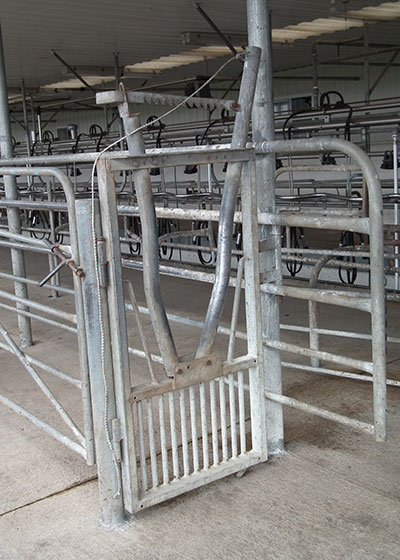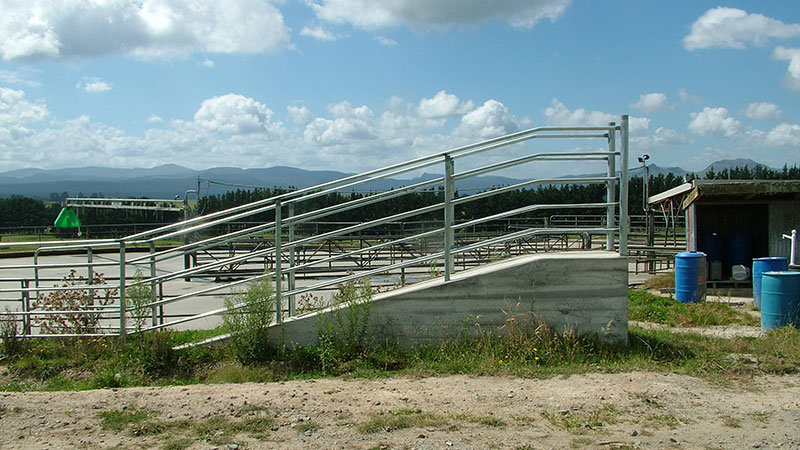Handling facilities
2 min read
Integrated cattle handling facilities, including head bales, crushes, and AI races, are essential for safe and efficient animal health tasks for both cows and handlers. The page covers the importance of designing these facilities with safety and ease of use in mind. From creating accessible crushes or head bales for treatments to designing herringbone-style AI races and loading ramps, these features can make a significant difference in a dairy farm. The right designs not only enhance cow flow but also help in avoiding hazards. Thoughtful planning and integration in new builds can make the entire system more effective.
Well integrated cattle handling facilities such as head bales, crushes and AI races make it quicker and safer to complete animal health tasks for both stock handlers and cows.
In new builds consider the integration of additional facilities – this ensures the best use of space and that the yarding system can cope with the full range of activities required.

Integrated handling facilities.
Head bails need to allow easy and safe access to all parts of the cow.
A crush or head bail is essential for safely restraining cattle when carrying out herd health procedures. The design must ensure that cattle are held securely. This is particularly important for large herds in which large numbers of cows are treated for lameness or calving difficulties.
When designing a head bail ensure:

Example of a bad head bail.

Example of a good head bail.
Herringbone-style AI races should be designed like the left-hand side of the herringbone.
Although efficient time-wise, dairies can be uncomfortable and dangerous places for vets and AI technicians to work. The association of painful procedures to the dairy can also affect future milk let-down, so painful procedures are best performed elsewhere, and a race is often more convenient and practical.
When designing an AI race include these features:
When designing a loading ramp include these features:

Herringbone AI race.

Loading ramp.
Now’s the perfect time to check in, plan, and set up for a strong season. We’ve pulled together smart tips and tools to help you stay ahead all winter long.
Whether you prefer to read, listen, or download handy guides, we’ve got you covered with trusted tools to support your journey every step of the way.